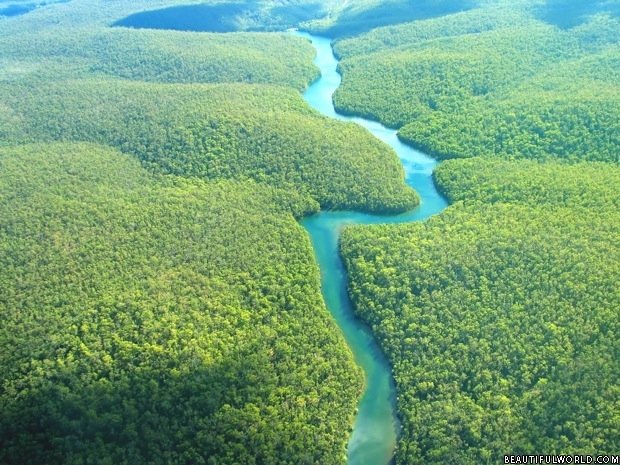
The Amazon rainforest, often referred to as the Amazon Jungle, is a vast tropical rainforest that covers the majority of the Amazon basin in South America. It is considered the largest rainforest in the world, spanning over nine countries: Brazil, Peru, Colombia, Venezuela, Ecuador, Bolivia, Guyana, Suriname, and French Guiana.
The Amazon rainforest is known for its exceptional biodiversity, containing millions of plant and animal species, many of which are endemic to the region. It plays a vital role in regulating the Earth's climate by absorbing carbon dioxide and producing oxygen through photosynthesis.
The Amazon River, the second-longest river in the world, runs through the rainforest, nourishing its diverse ecosystem. The rainforest itself is characterized by dense vegetation, towering trees, and a complex network of rivers, lakes, and wetlands.
The indigenous people have inhabited the Amazon region for thousands of years and continue to rely on its resources for their livelihoods and cultural practices. However, the Amazon rainforest is under threat from various factors, including deforestation, illegal logging, agricultural expansion, mining, and climate change.
Deforestation, primarily for agricultural purposes such as cattle ranching and soybean cultivation, poses a significant threat to the Amazon rainforest. Large-scale clearing of land leads to habitat destruction, loss of biodiversity, and contributes to greenhouse gas emissions. Efforts to protect and conserve the Amazon rainforest involve initiatives by governments, environmental organizations, and indigenous communities to promote sustainable practices, enforce regulations, and raise awareness about the importance of preserving this unique ecosystem.
Preserving the Amazon rainforest is crucial not only for the local communities and biodiversity but also for the global climate. Its preservation helps mitigate climate change, protects endangered species, and maintains the delicate balance of the Earth's ecosystems.